Lebanon’s protests are the largest and most ambitious in 15 years. Anthony Elghossain reports on the why, the how, and what went down in Beirut.
Lebanon is an impossible—or, an impossibly infuriating and inspiring—place. Over the past nine days, hundreds of thousands of people in Lebanon have been protesting—the largest protests in almost 15 years. And they’ve been partying, although this moment isn’t, and could never have been, just a party.
Taxes were the trigger. Lebanese leaders tried to adopt a few politically problematic measures—none more enflaming, in laying bare their lack of self-awareness and sensitivity towards the public, than a “WhatsApp tax” that could have cost each person about $6 a month—thrown in with other so-called austerity measures that leaders have been trying to push through for two years.
“We need to shut that shit down,” says Jessica Kalache, a Lebanese New Yorker who works at a Lebanese NGO, while we bask in the warmth of a Beirut bar—in Mar Mikhael, a once industrial neighborhood that has in the last decade transformed into an ugly lovechild of Williamsburg, New York, and Kreuzberg, Berlin. She sips her Boulevadier, eyeing me sideways, taking a pause. “This isn’t a fucking WhatsApp Revolution or a carnival.”
No, it’s not. Nor is it directly about austerity, which others have protested in recent years, or other important issues like the fiscal trap Lebanon is in, its monetary mess, or the assorted causes carried forward by activists and would-be reformists and revolutionaries who’ve protested over the years.
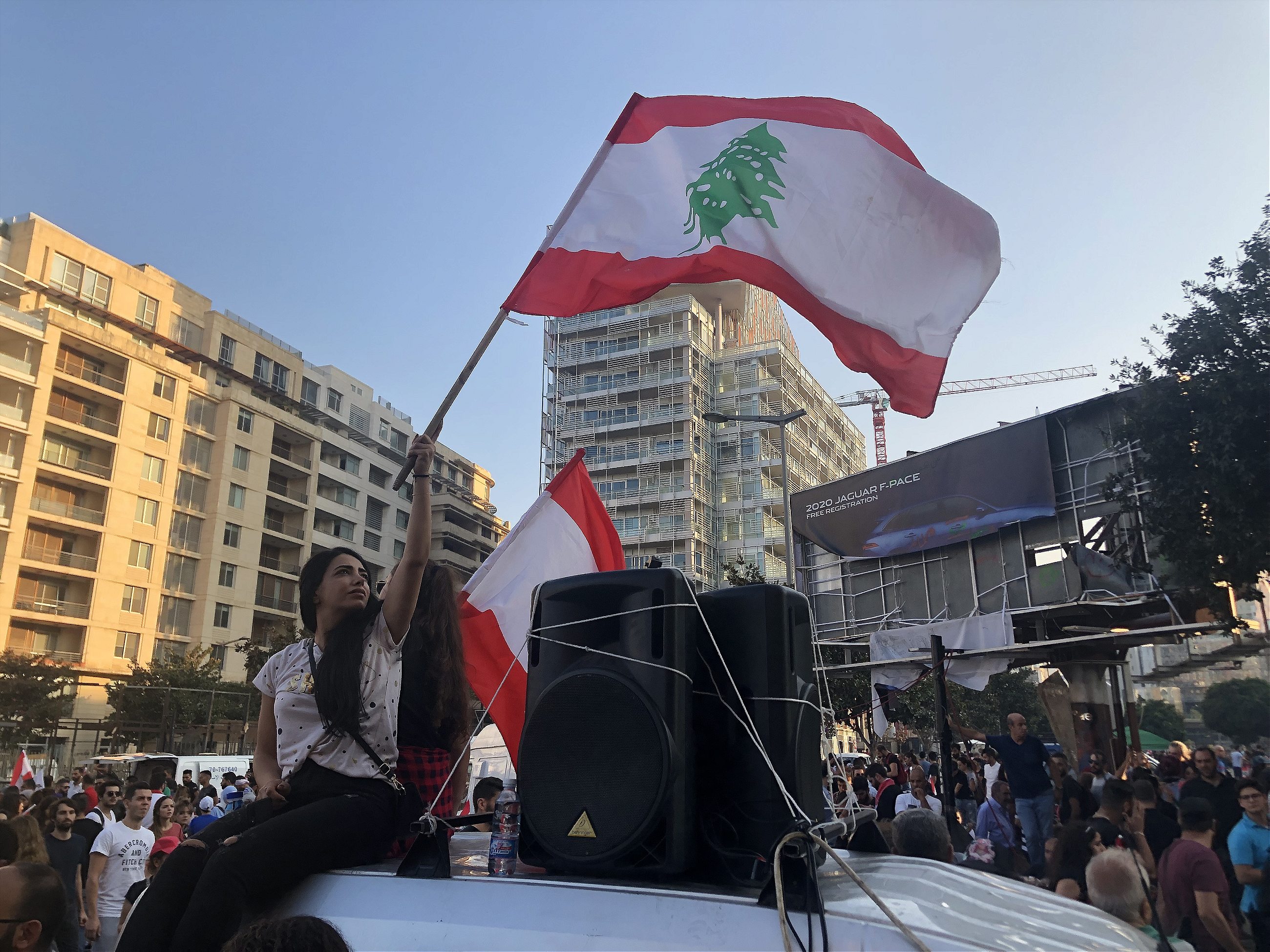
The hundreds of thousands of people have turned out to the streets and public squares for something far simpler: They’re fed up. Since the Cedar Revolution of 2005, the Lebanese have struggled through war, constitutional crisis, political paralysis, erratic economic performance, and more. They’ve struggled, within and across communities, as Lebanese leaders pit their partisans against each other in the streets while glad-handing, back-slapping, and ass-kissing in the halls of power. They’ve struggled with inadequate transportation infrastructure; power shortages, water waste, and garbage pileups; intermittently available and incredibly expensive telecommunications; concrete’s constant, creeping colonization of all that was once natural and beautiful here; air, noise, and water pollution; and daily sieges of the soul, making otherwise decent people so desperate for dignity that they, ultimately, seize it at the expense of others.
Everyone is protesting everything, everywhere, in every way imaginable.
With thousands, then tens of thousands, then hundreds of thousands of people flooding the streets—demanding everything, at once, while also remaining focused on immediate and realistic changes, such as a cabinet shuffle and the establishment of a corruption commission—Lebanese leaders took to their podiums, offices, and basement hideouts. Three men, who are the pillars of the current cabinet—the latest triumvirate, or troika, to sit atop the communal order that has existed since the end of the Lebanese Civil War—spoke on three different days. People watched on TVs, cell phones, and big screens set up at protest sites. There was Gebran Bassil, the Lebanese foreign minister, a Maronite Catholic, son-in-law of the President of the Republic (the octogenarian former general and self-styled de Gaulle du Liban Michel Aoun). And then Saad Hariri, the Lebanese premier, a Sunni Muslim, and the son of the man whose assassination triggered the last series of popular protests this large in 2005. And finally Hassan Nasrallah, a Shia Muslim, Hezbollah’s Secretary-General, and perhaps the most politically powerful man in Lebanon.
Bassil’s speech backfired, making him one of two targets drawing special ire. Hariri, who’s nearly as lost as he is rich, told people that he felt their pain and would report back in 72 hours—with a set of reforms that neither he nor his partners have adopted in 15 years of post-occupation order. People have been angry with him, yet would be far angrier had they not been pitying him, too. Nasrallah came out last: He backed up the other two, professed empathy, and wagged his finger while preaching prudence to the very people who—like their cause, hate their cause—have been fighting and bleeding for Hezbollah, the so-called Party of God, in Lebanon, Syria, and elsewhere for decades.
“Useless,” a man mutters, as friends huddle to watch on his phone. “Useless.”
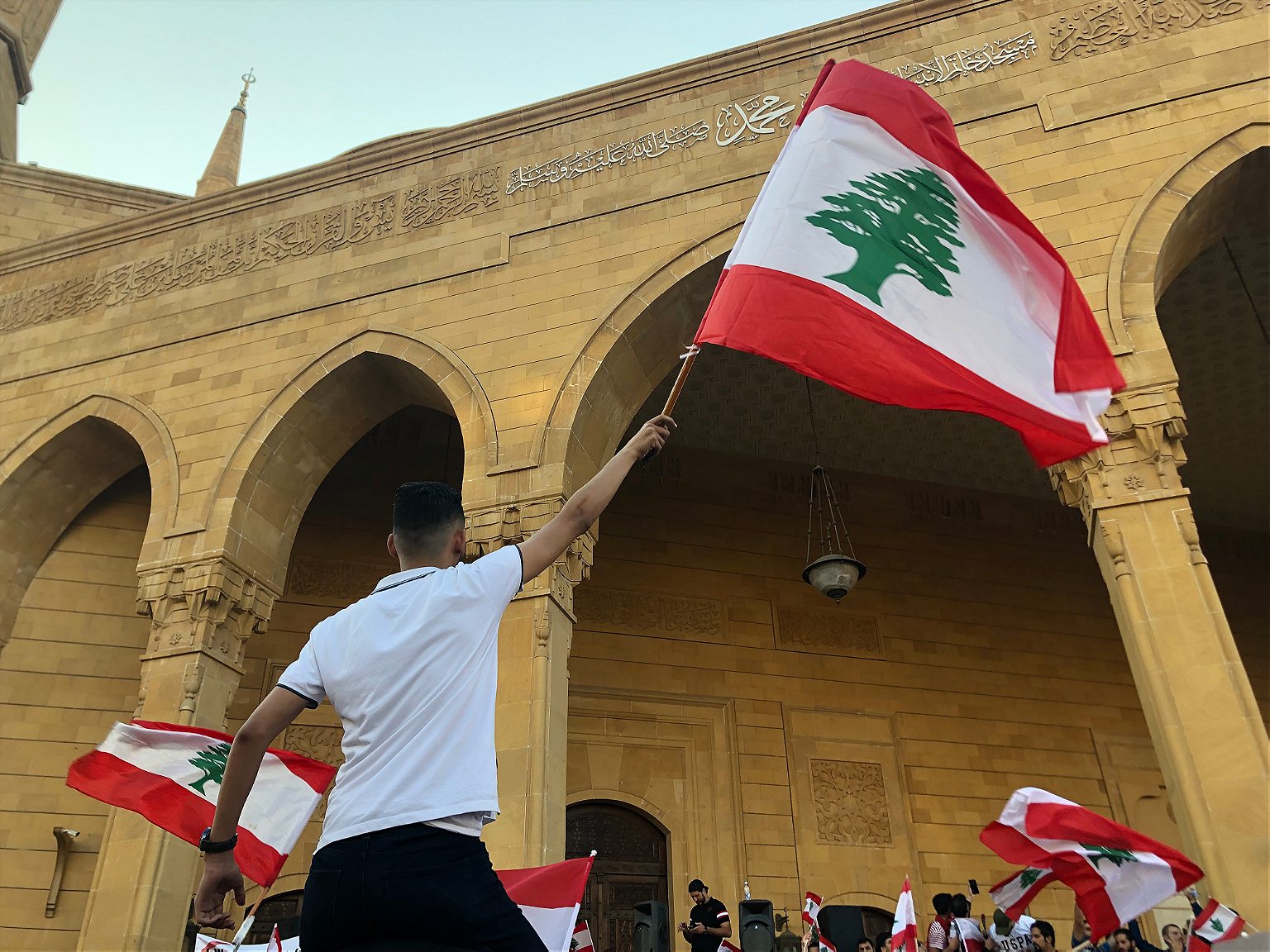
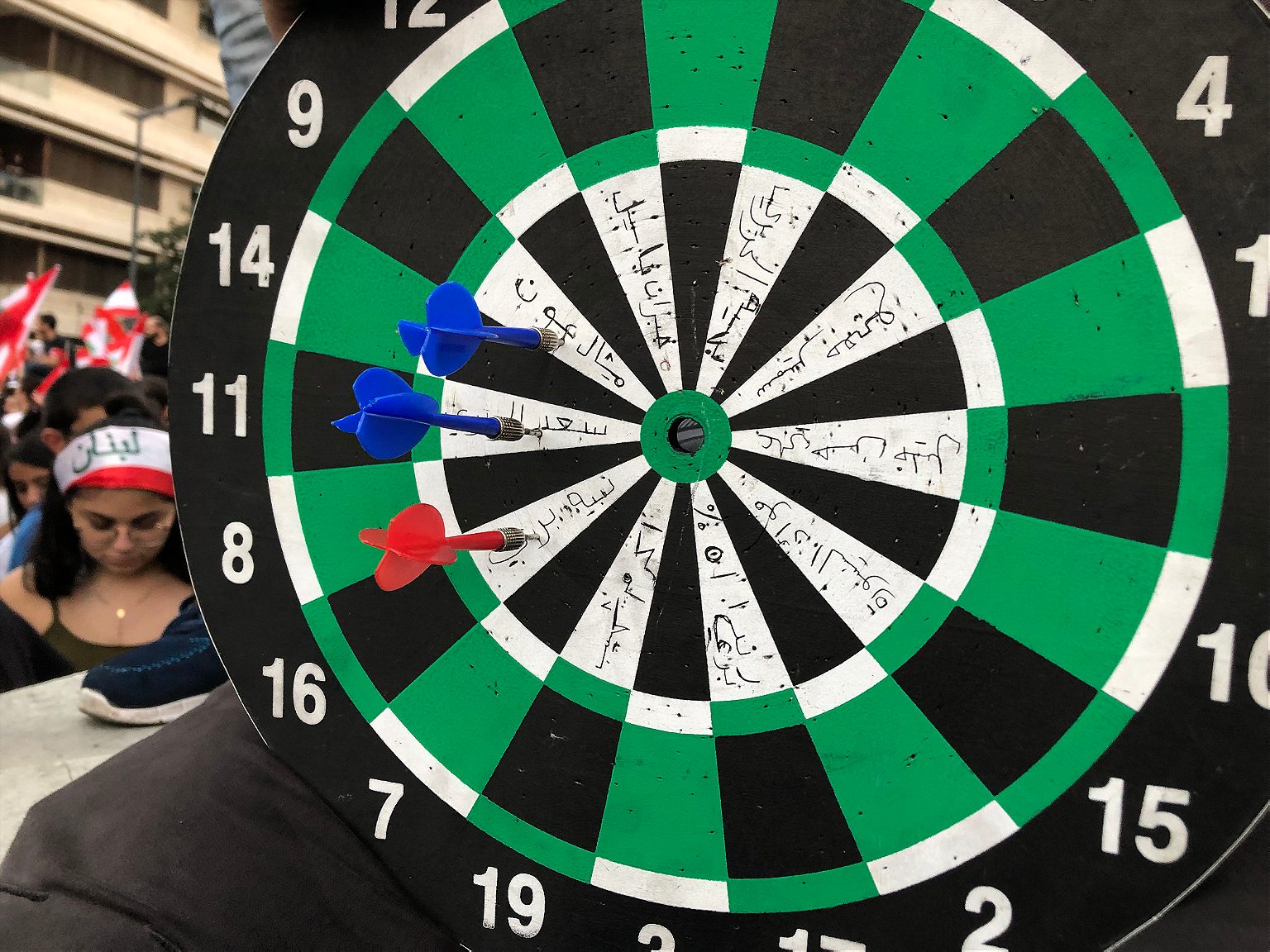
The Lebanese people are capable of inspiring. They were during the Cedar Revolution, when 1.5 million people protested—in one place, in one day—with countless others stuck on the highways leading into the capital, Beirut. In a series of peaceful protests, they threw out the same Syrian regime that has been brutalizing its people since the Syrian war began in 2011.
And they are inspiring today.
“This is the people’s revolution,” says Mego Kaychian, an Armenian-Lebanese friend who grew up in Sweden. We’re downing whiskeys at night in an empty restaurant a few blocks from Martyrs’ Square that we’ve made into our own little public space, after he’s just flown in from Dubai to join the masses. “And, you know… well, you can tell people want to be a part of something. I do.”
Everyone is protesting everything, everywhere, in every way imaginable. They’re out in Tripoli, the mostly Sunni coastal town of the north that has often been unfairly maligned for perceived backwardness, radicalism, and a somewhat alien existence within the rest of Lebanon. They’re out in the coastal areas of Keserouan and Metn, a de facto Christian canton since the civil war and Maronite heartland, rejecting three of their bosses: Bassil, the sectarian opportunist dressed up as a statist; Samir Geagea, a clever tactician and reconstructed warlord; and Sami Gemayel, a “fresh-faced” scion of a century-old dynasty who started thumping the reformist drums when the other two leaders squeezed him out in 2016. They’ve turned out in the Chouf, home to Druze and Maronite communities, and others who—cooperating and competing, feuding and reconciling—gave birth to the Lebanese constitutional order that has existed since the 19th century. They’ve turned out in Baalbek and Tyre, home mostly to Shia, despite facing the naked thuggery of the resistance militia-turned-political party, the Amal Movement, and other purported protectors. And they’ve been carrying on in Beirut, too.
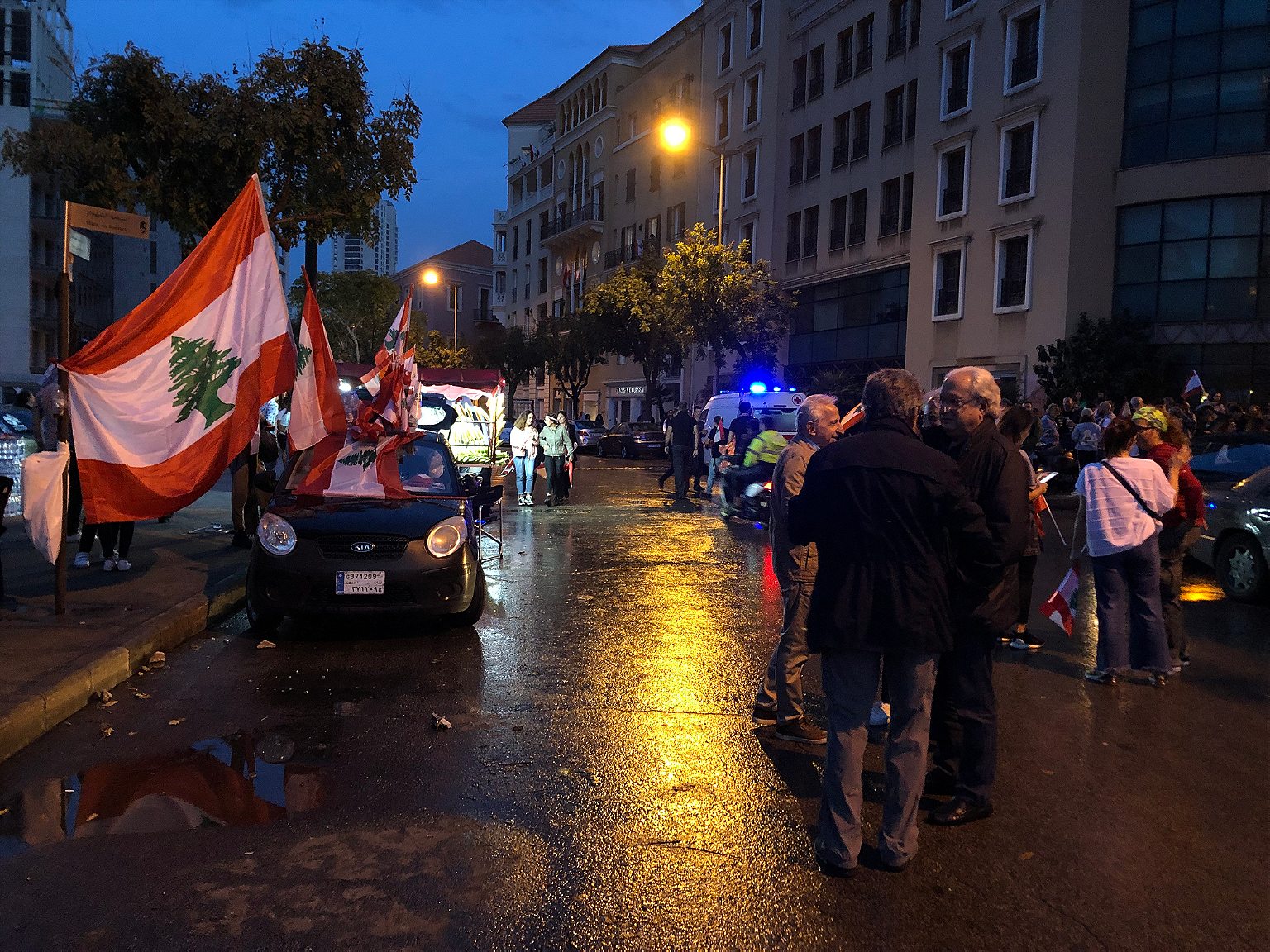
With the world watching, it seems the Lebanese have turned their protests into a party. They’ve been singing and dancing in the squares, carousing in the streets, and throwing raves in roundabouts and public parks. They’ve been blocking the streets with plants and cars, or their own bodies. They’ve been handing out roses to soldiers, dancing the dabke, and teaching classes in public spaces—spaces that citizens are reclaiming and recreating just as they have lit their own highways, pumped their own water, and provided themselves with power and light. They’ve held raves and concerts, rallies and roundtables. They’ve had picnics and prayer sessions. And they—we—have damn sure hit the bars.
Others speak with their silence. The man, eyes crinkling, who smiled at people beneath Mohammad al-Amin Mosque; the boy, in one of those ubiquitous Guy Fawkes masks, pointing an imaginary gun in the air without muttering a word; the girl, looking at her dad with a mixture of bewilderment and curiosity, as he pumps his fists in the air; and the woman—speaking nothing, and yet saying everything—standing, draped in her flag and adorned with a halo of serenity, just looking at protestors.
I cry. Watching her watch the rest of them, wondering what she was feeling, I—for once—also have nothing to say.
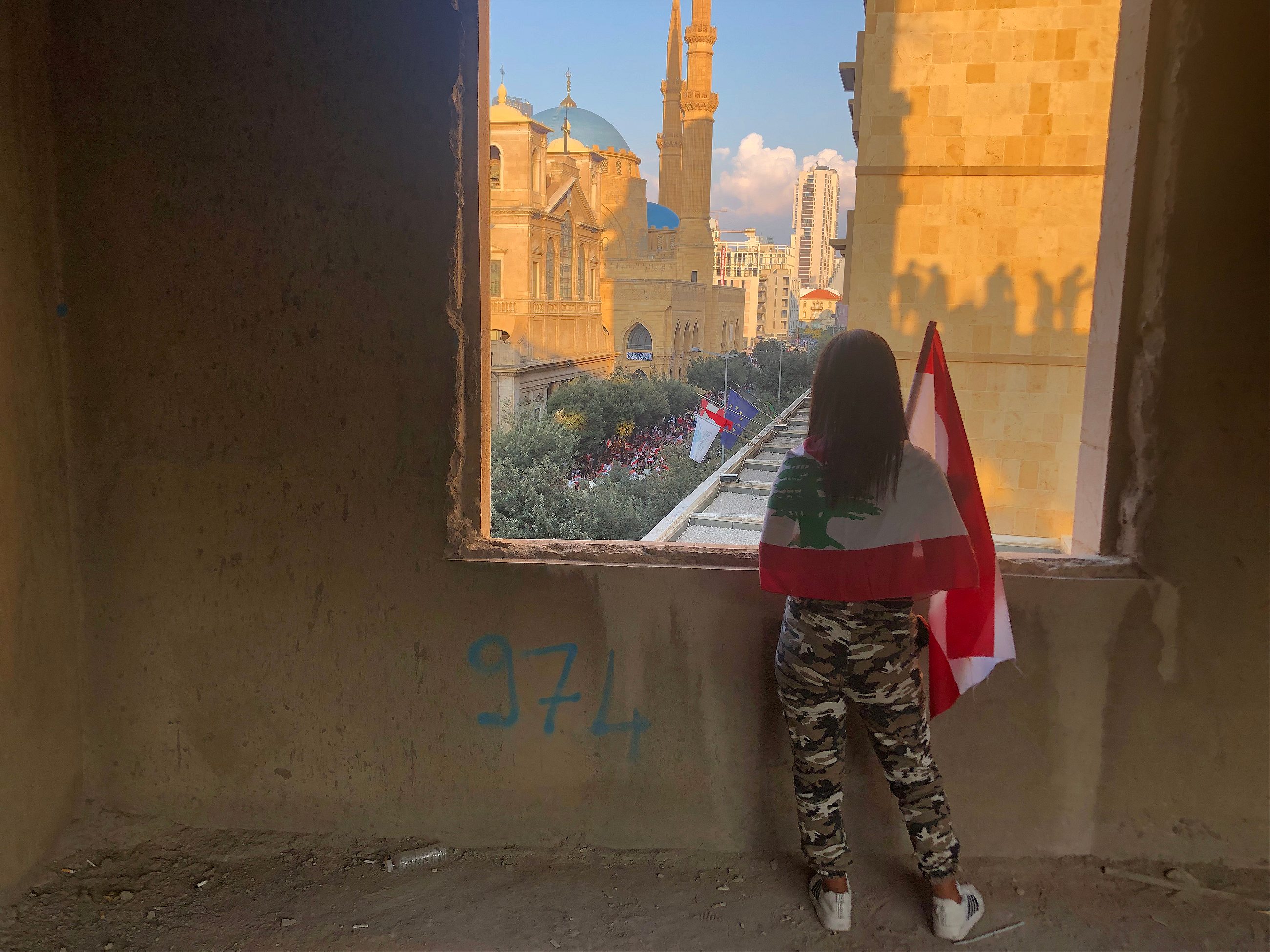
People been creative, funny, expressive, and downright entranced. But they, like their predecessors from the occupation-era 1990s to the civil-society surge of the 2010s, have demonstrated true bravery—not the absence of fear, but the painful persistence in the face of fear—every day. In Beirut, a woman kicked a gun-wielding goon in the groin—knowing full well that she might’ve been shot, on purpose or by accident, when confronting him. Other women formed walls to prevent violence and de-escalate tensions between members of security services and other protestors. Men in Beirut, Jal el-Dib, Zouk, and beyond have jostled with security services—then exchanging hugs, tears, and kisses, knowing that they’ve been put in the perverse position of fighting against themselves. Just outside the presidential palace, a journalist—not a protestor, a journalist—fought off a partisan aggressor who tried to shout her down, insulted her character, and violently crowded her space.
They Lebanese don’t fear unknown devils, when the devils they know are bad enough.
On the one hand, of course, the Lebanese may fear that these incidents foreshadow the future. While Lebanese leaders have failed to govern well, they’re also brilliant at preserving their position and at bending instead of breaking—the sad reality being that any conceivable sort of success today may not be sustained, and almost certainly won’t be transformational. They are little masters of brinkmanship, fear-mongering, and pragmatism. They can deploy patronage, enlist international support, and bend instead of breaking—all with bugaboos like sectarian strife, financial collapse, and constitutional crisis in their trunk. They also maintain an oligopoly over the use of force, thus not only contributing to the state’s weakness, but also being able to rely on threats, subtle and structural, of a violent response.
On the other hand, the Lebanese fear nothing, except war—and that’s the prudent fear of the known, not the irrational fear of the unknown. They Lebanese don’t fear unknown devils, when the devils they know are bad enough: Specters of constitutional crisis, when they’ve lived in a decades-long version of one; or prospects of political paralysis, when the state already grinds to a halt regularly. They can’t fear anarchy, when they’ve been living in an anarchic place. For too long, the Lebanese have lived through the sorts of conditions that otherwise deter them from pushing—prudently, imprudently, whatever—for change. Lebanese leaders now, as ever, say: Apres nous, le deluge. And people, as they sometimes but still rarely do, are yelling back that it’s already fucking flooding.
“Turn around. The Revolution is that way.”
The revolutionaries go home at night. The ravers do, too—eventually. Boys fight. Young men pick on younger men. One flips the other on the ground, while cussing out his mother. Another bunch of kids pop wheelies and do doughnuts on motorbikes in a parking lot. Farther down the street linking Martyrs’ Square and Riad Solh Square, teens huddle and dance around fires in barrels. They play trance, rock, and old Arabic anthems. Some smoke shisha, while others fire up the grill. Others sit alone. They’re part of Beirut, of Lebanon, too.
A bunch of boys race down the road. They’re going against traffic, at 4:08 a.m. Blaring their radio, they honk their horns, wave their flags, and playfully yell about the “Revolution”—or, thawra. They drive right past the police station, until a cop starts yelling.
“Yo! Are you serious?!”
“We are driving,” a boy yells back, slurring. “Welcome, sir. Welcome.”
“Where are you driving?” the cop says, bemused.
“To the Revolution!”
“You’re going the wrong way.”
“We’re just lost,” the boy says, coyly.
“Turn around. The Revolution is that way.”





